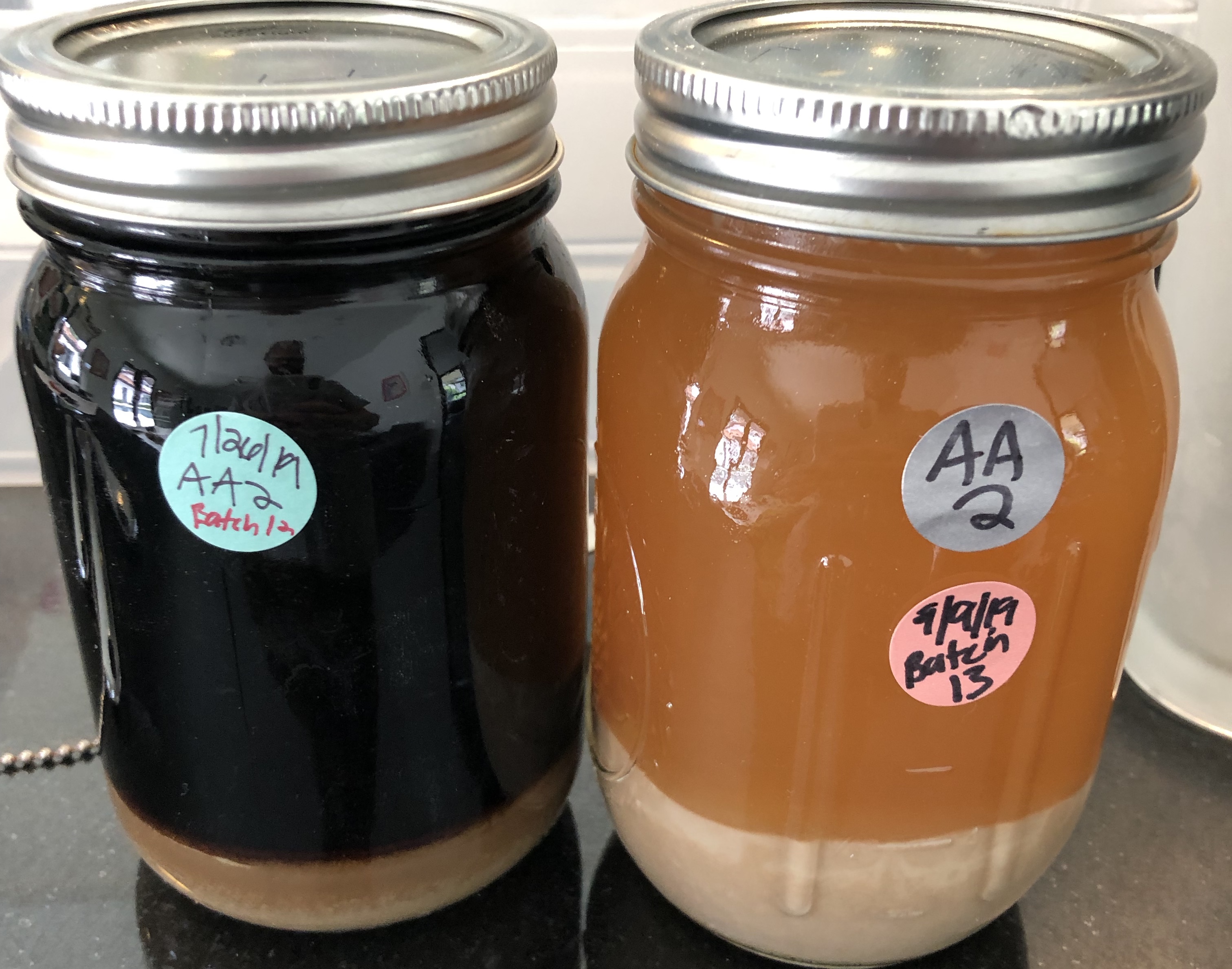ISS IT Guy
Member
Hey HBT,
I got into home brewing this year and have been trying to brew consistently in 2019 and was aiming for 12 batches in 12 months. In early November I decided to harvest the yeast using a separatory funnel that I got in August. My purpose for doing this is that it can save me the cost of having to buy yeast when I purchase ingredients, plus it's just fun.
On my 8th and most recent brew, an IPA, I pitched some yeast that I had harvested from brew #7 which was the Rushmore IPA recipe out of Palmer's book using Wyeast 1056. The fermentation was highly active and I ended up with about 3 inches of yeast cake/sediment at the bottom, which I harvested again. Does this look alright to pitch? And does anyone know about the amount of yeast I should be pitching when using harvested yeast? Since this time I ended up with a ton of sediment at the bottom, I want to make sure I'm not overpitching or using more yeast than I need to be.
I got into home brewing this year and have been trying to brew consistently in 2019 and was aiming for 12 batches in 12 months. In early November I decided to harvest the yeast using a separatory funnel that I got in August. My purpose for doing this is that it can save me the cost of having to buy yeast when I purchase ingredients, plus it's just fun.
On my 8th and most recent brew, an IPA, I pitched some yeast that I had harvested from brew #7 which was the Rushmore IPA recipe out of Palmer's book using Wyeast 1056. The fermentation was highly active and I ended up with about 3 inches of yeast cake/sediment at the bottom, which I harvested again. Does this look alright to pitch? And does anyone know about the amount of yeast I should be pitching when using harvested yeast? Since this time I ended up with a ton of sediment at the bottom, I want to make sure I'm not overpitching or using more yeast than I need to be.







